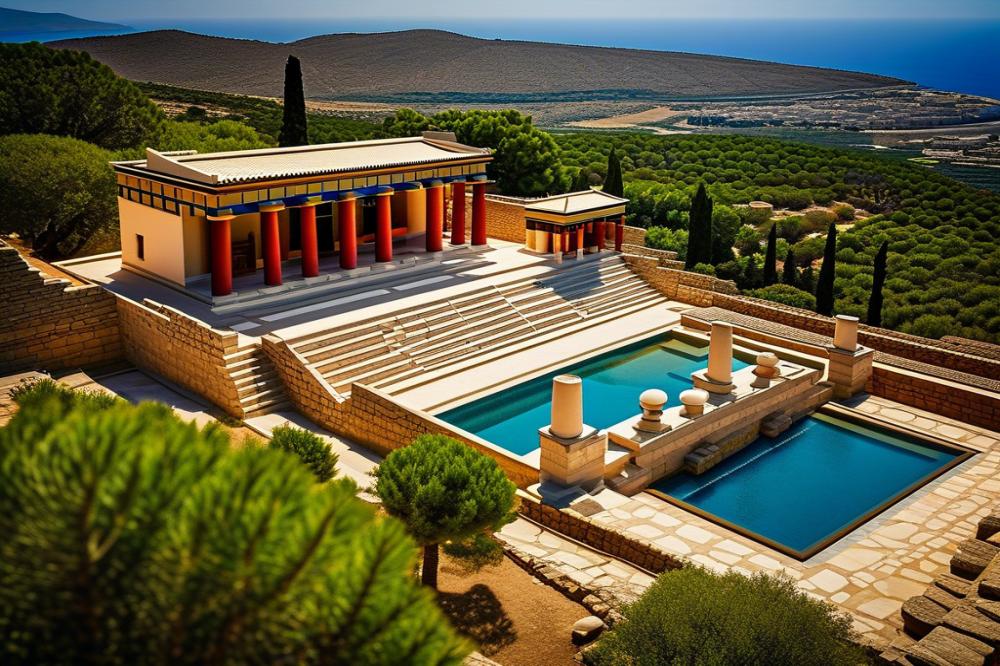Discovering the Ancient Minoan Ruins of Knossos
Crete, the largest island in Greece, holds a treasure trove of history. Among its many archaeological sites, the palace at Knossos stands out for its fascinating remnants of the Minoan civilization. This site is not just significant for its ancient ruins, but also for its rich tapestry of stories woven through Greek mythology. Legends of the Minotaur and the famous labyrinth began here, captivating the imagination of countless generations.
Excavations of Knossos revealed vibrant frescoes that tell stories of a society that was advanced and artistic. These colorful artworks allow glimpses into daily life and rituals of a people who thrived thousands of years ago. Visitors often feel a profound connection to the past while exploring these historic grounds.
Holiday adventures in the Greek Islands attract many travelers. Each island boasts unique landscapes and rich cultural heritage. Exploring ancient ruins like those at Knossos adds an exciting dimension to any trip. The thrill of discovering long-lost worlds provides memories that last a lifetime. In every corner, history speaks to those willing to listen, making it a truly remarkable experience.
Understanding the importance of such sites goes beyond mere tourism. The historical significance of places like Knossos helps preserve cultural narratives. These stories, entrenched in the evolution of human society, are vital to appreciating our shared past. They remind us of the intricate ties between mythology and history that shaped the ancient world.
The History of Knossos
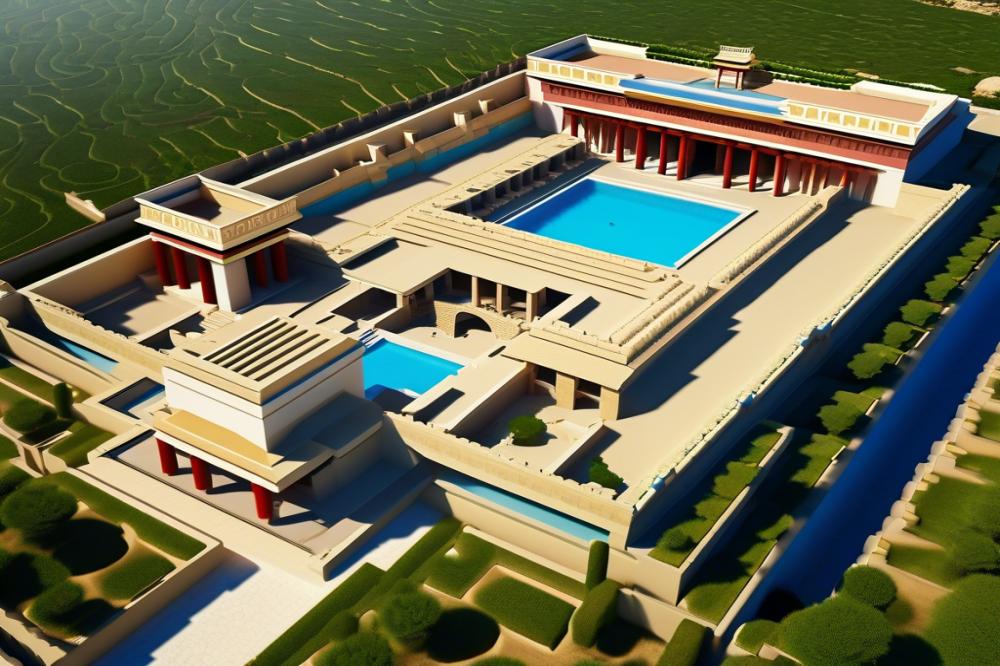
The ancient site located on the island of Crete is a significant part of history. This place showcases the rise of the Minoan civilization, which thrived from around 2600 to 1450 BCE. The Minoans are known for their advanced culture, impressive architecture, and unique artistic achievements. They played a crucial role in the development of trade and culture across the Mediterranean.
Archaeological discoveries have revealed much about the inhabitants. For instance, they built elaborate palaces, with Knossos being the largest and most famous. These structures featured complex layouts and intricate designs. Visitors often find themselves amazed by the well-preserved frescoes that adorn the walls, depicting vibrant scenes of nature, rituals, and daily life.
According to Greek mythology, this region is famous for its labyrinth. Legend has it that King Minos commissioned a maze to house the Minotaur, a half-man, half-bull creature. The tale reflects the larger-than-life heroes and legends that originated from this culture. Such stories continue to inspire imaginations around the world.
The importance of trade cannot be overstated. Minoans engaged in commerce with neighboring civilizations, exchanging goods like pottery, textiles, and food. This exchange facilitated the spread of ideas and cultural practices. Through these interactions, they built a rich cultural heritage that shaped future generations.
Excavation efforts began in the early 20th century, led by archaeologist Sir Arthur Evans. His work uncovered many treasures, bringing the history of the Minoans to light. Many artifacts found remain valuable to historians and scholars today. Both experts and amateurs find clues about life during the Minoan period, piecing together the puzzle of this ancient society.
In summary, the historical narrative of this legendary site is full of intrigue. With its remarkable architecture, vivid artwork, and rich mythology, it paints a vivid picture of life in antiquity. Understanding this unique location offers insights into how civilizations evolve and thrive.
The Spectacular Palace of Knossos
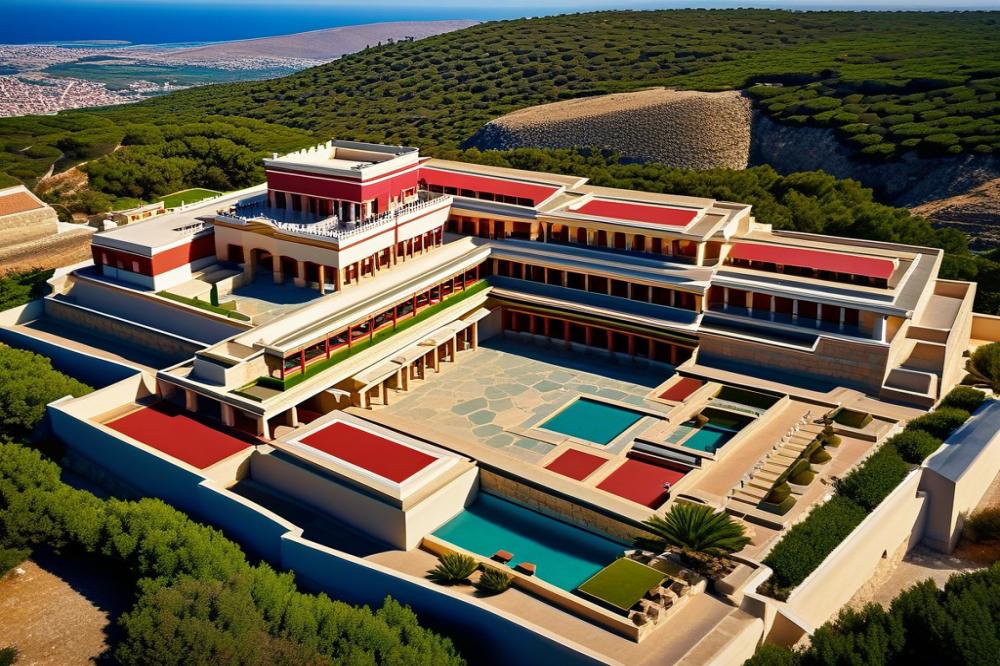
Located on the island of Crete, the ancient ruins of the palace complex are remarkable. This archaeological site demonstrates the advanced architecture of Minoan civilization. Built around 1900 BC, the structure features a labyrinthine design that contributed to myths of the Minotaur. With around 1,300 rooms, its layout was both complex and functional.
Frescoes adorn the walls and ceilings, depicting vibrant scenes from daily life and rituals. These paintings offer a glimpse into Minoan culture and their connection to Greek mythology. Various rooms served specific purposes. The throne room, for example, was a central area for governance. It featured a large stone throne, symbolizing authority.
Numerous storage rooms held surplus goods. These spaces reveal insights into the economy and trade of the time. Advanced technologies were employed in construction. They used mud bricks, stone, and timber to create a resilient structure. The innovative plumbing system included toilets and drainage, showcasing an understanding of sanitation.
The palace functioned not just as a royal residence, but also as a hub for administrative activities. The large gathering areas catered to discussions and ceremonies. Life in this society revolved around rituals, trade, and daily activities that connected people. Each room played a part in this intricate tapestry of life.
Excavations have unearthed many artifacts. Pottery, tools, and decorative items reflect the artistic skill of the Minoans. Cultural heritage is rich here, revealing a civilization that thrived long ago. Visitors to the site often find themselves surrounded by echoes of a vibrant past.
Frescoes and Artistry
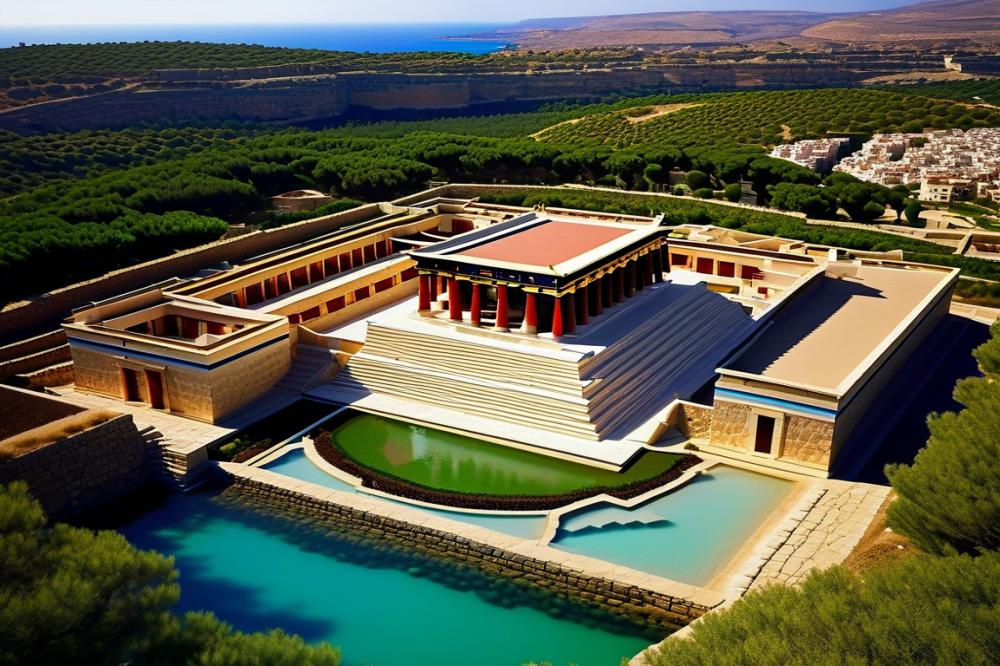
Frescoes found at the ancient ruins on Crete are remarkable pieces of Minoan artistry. These vibrant murals provide a window into the life and beliefs of a civilization that flourished thousands of years ago. Archaeological excavations have uncovered numerous paintings that reflect the culture’s deep connection with nature, spirituality, and the sea.
Bright colors dominate the walls of the palace, showcasing themes ranging from ceremonial scenes to daily activities. Figures depicted in fluid poses reveal the movement and grace admired by the Minoans. One can often see dolphins playfully swimming or women in elaborate dresses, indicating the importance of both nature and societal roles.
The techniques used in these frescoes were advanced for their time. Artists applied natural pigments to wet plaster, allowing the colors to bond as the plaster dried. This method, though simple, produced vivid colors that have withstood the test of time. Many of these decorations also served to decorate spaces within their palatial structures, linking art to the architecture of the site.
Themes related to Greek mythology often emerge in these artworks. Fabled creatures and gods reflect the Minoans’ rich narrative traditions. The labyrinth motif, often associated with the Minotaur legend, symbolizes the complex nature of their beliefs and the world they inhabited. Through art, they expressed stories that helped define their cultural heritage.
More than just decoration, frescoes played a vital role in Minoan society. They served as a means of communication, sharing important values and ideals. This visual language connected people to their traditions and environment. By portraying everyday life, Minoans showcased their relationship with the natural world and their reverence for its beauty.
Artists drew inspiration from their surroundings. Bright flowers, animals, and marine life often filled the scenes, celebrating the island’s natural bounty. The extensive use of the color blue is particularly striking, symbolizing the sea that surrounded Crete, crucial to their livelihood and mythology. Viewing these frescoes allows us to appreciate their artistry and insight into a unique society.
Greek Mythology and the Labyrinth
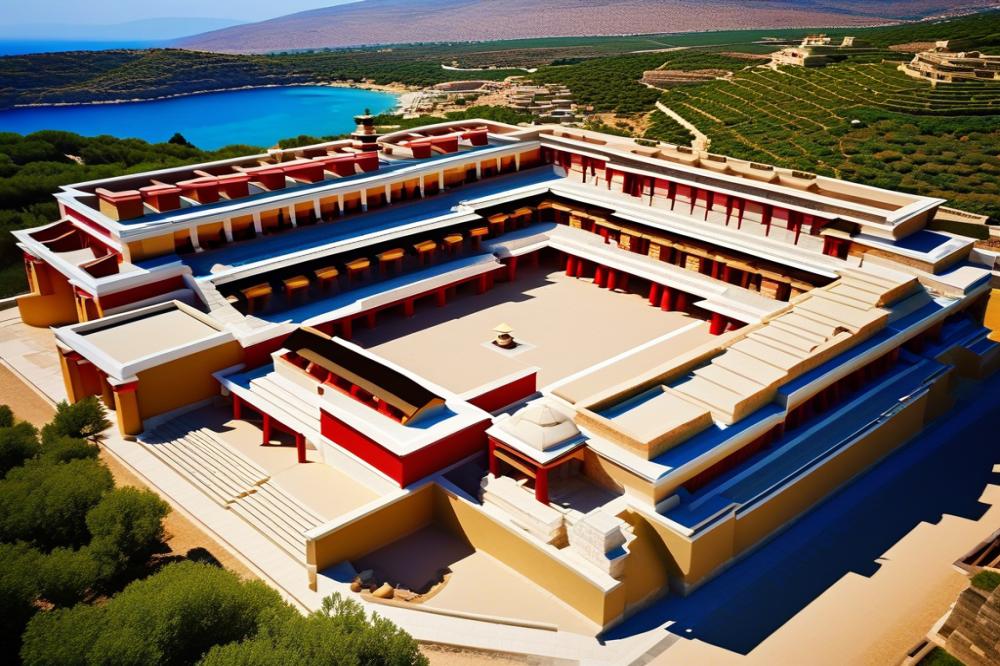
Crete is home to some of the most fascinating stories in Greek mythology. Among these tales, the legend of King Minos stands out. He ruled over a prosperous kingdom and was known for his wisdom. However, his legacy is deeply intertwined with the chilling story of the Minotaur.
The Minotaur, a creature with the body of a man and the head of a bull, was born from a union between Minos’s wife and a majestic bull. To contain this beast, King Minos commissioned a complex labyrinth designed by the skilled craftsman Daedalus. This maze was intended to confuse and trap the creature, preventing it from bringing terror to the kingdom.
Archaeology sheds light on these myths, particularly at the site of the ancient ruins where many believe the labyrinth was located. Excavations at the palace revealed intricate design and layout. The architecture suggests that the Minoans were advanced and innovative. Some even argue that the palace’s layout resembles a labyrinth, with its many rooms and passageways linking various important areas.
Frescoes found at the site depict scenes of everyday Minoan life, highlighting their rich cultural heritage. These vibrant artworks offer a glimpse into a world filled with rituals, trade, and connection to the divine. They also connect back to the stories of mythology that surround this historical site. The myths served as a way to explain natural phenomena and cultural practices.
The allure of the labyrinth myth extends beyond individual stories. It serves as a metaphor for the journey of life itself, filled with complexities and challenges. The connection between the labyrinth and King Minos shows how closely intertwined mythology and reality can be in ancient cultures. Understanding these narratives deepens our appreciation for the history encapsulated within the ruins.
The legacy of the Minoans, infused with mythology and artistry, invites us to explore the significance behind their creations. Each archaeological discovery at this site adds layers to the story, revealing the shared human experiences depicted in myth. Through the stories of Minos and the Minotaur, the ancient civilization creates a bridge between the past and the present, urging modern minds to ponder their lessons.
Excavation and Archaeological Discoveries
The ancient ruins of Knossos, a significant archaeological site on the island of Crete, drew the interest of Sir Arthur Evans in the early 20th century. His excavations began in 1900 and lasted for several decades. Evans’s work transformed the understanding of Minoan civilization and its influence on Greek history. His extensive efforts revealed that this culture was vibrant and complex, with many aspects not previously known.
Excavation methods during Evans’s time combined traditional digging with modern techniques for the era. Using precise tools, his team carefully removed layers of earth to uncover structures beneath. They discovered large rooms, corridors, and even a sophisticated drainage system. One of Evans’s key findings was the grand palace, which showcased intricate architectural planning and decoration. Much emphasis was placed on preserving what they uncovered to maintain the site’s integrity.
Frescoes adorned the walls, depicting scenes of natural beauty and elements of Greek mythology. These artworks provided insight into the beliefs and daily life of the Minoans. The vivid colors and detailed imagery captured the essence of a civilization that thrived thousands of years ago. The imagery suggested a deep connection to their environment and an appreciation for artistic expression.
Excavations also brought to light the concept of the labyrinth, famously linked to Greek mythology. Legend has it that this complex design was home to the Minotaur. The discovery of interconnected rooms and passageways sparked further interest in the myths surrounding the site. Scholars have debated the meaning of the labyrinth, linking it to Minoan culture and its storytelling traditions.
Ongoing research continues to expand the knowledge of this cultural heritage. Modern archaeologists utilize advanced technology like ground-penetrating radar and 3D modeling. Such tools assist in mapping the site without disturbing its layers. New findings are still surfacing, leading to fresh interpretations of Minoan society and its legacy.
Today, the work done by Sir Arthur Evans remains foundational. His dedication to excavation not only highlighted the significance of the palace structure but also laid the groundwork for future studies in archaeology. The ancient ruins of Crete serve as a reminder of a powerful civilization, whose influence extends into modern times.
Visiting Knossos: Tips and Experiences
Traveling to Crete offers the chance to explore remarkable ancient ruins that tell the story of a bygone era. The Knossos site is a highlight for anyone interested in archaeology and history. For those planning a visit, knowing the best times to go can make a significant difference. Consider visiting in the early mornings or late afternoons to avoid large crowds. This timing also allows for softer light, perfect for pictures of the intricate frescoes that adorn the walls.
Guided tours can be beneficial for understanding the complex’s rich history. Many local guides offer engaging insights into the myths of Greek mythology and the famous labyrinth of the Minotaur. Opt for a tour that includes the latest archaeological findings to enhance your experience. Alternatively, audioguides are available and provide flexibility for exploring at your own pace.
Exploring the surrounding area can enrich your visit. Several beautiful locations nearby allow for further discovery of Crete’s cultural heritage. Visit the charming village of Archanes or the ancient site of Phaistos, known for its stunning views and remarkable artifacts. Each site contributes to a deeper understanding of the Minoan civilization and its impact on the island.
Dressing appropriately for the weather is crucial. Summers can be hot, so wearing a hat and applying sunscreen is wise. Comfortable shoes are a must, especially for walking on uneven ancient pathways. Stay hydrated, as many areas lack shaded spots in the warmer months.
Photography enthusiasts will love the vibrant frescoes and architectural wonders. Capturing the essence of Minoan art requires patience and respect for the site. Always adhere to rules about photography to help preserve the ancient surroundings. Consider visiting outside peak tourist hours for fewer interruptions.
Finally, preparing some background knowledge before arriving can make the history come alive. Reading about the palace’s layout and the significance of various structures will deepen your appreciation. Understanding the art and architecture also helps connect the dots between the myths and their historical context.
Understanding the Legacy of Minoan Civilization
The ancient ruins offer more than just a glimpse into the past; they present a vital connection to the Minoan civilization. This culture, thriving on Crete thousands of years ago, laid the groundwork for numerous societies that followed. The sophistication of their architecture and art remains impressive, reflecting a society rich in innovation and creativity.
Exploration at Knossos reveals much about daily life, social structure, and religious practices. Artifacts and frescoes tell stories of a people who valued beauty and complexity. Insights gained from these discoveries have captivated historians and archaeologists alike. Such findings prompt us to reflect on how civilizations influence one another through time.
Visitors to these ancient sites must take the opportunity to immerse themselves in history. Such experiences can deepen appreciation for the heritage that influences modern culture. As you wander among the remnants of this once-thriving city, imagine the lives of those who walked these paths long ago. Picture the vibrant ceremonies and trade dialogues that shaped their world.
Encouragement goes out to all who seek holiday adventures in the Greek Islands. A trip to these historical landscape is not just a journey through time; it is a chance to connect with the origins of European civilization. Every corner of the ruins preserves a story worth discovering. Visiting the remnants of the Minoan civilization will enhance your understanding and appreciation of human history. Embrace the adventure and uncover the mysteries of the past.

